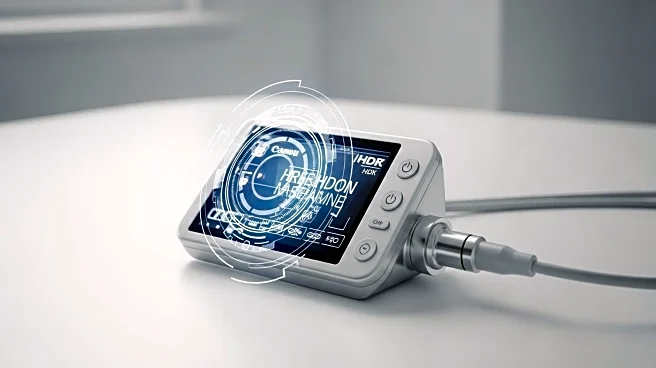What is the story about?
What's Happening?
At the 2025 European Society of Cardiology Congress, Johnson & Johnson and Abbott presented significant updates on their heart device technologies. Johnson & Johnson showcased real-world data from its Varipulse pulsed field ablation (PFA) platform, highlighting its safety and effectiveness in treating atrial fibrillation. The VARIPURE post-market sub-study reported a 0.6% primary adverse event rate and a 99.7% acute pulmonary vein isolation rate, suggesting strong procedural efficiency. Meanwhile, Abbott's Navitor transcatheter aortic valve implantation system received the CE mark for treating patients with symptomatic, severe aortic stenosis at low or intermediate risk for open heart surgery. This expanded indication is expected to increase the number of patients eligible for the device. The approval was based on data from the VANTAGE trial, which showed a low rate of all-cause mortality or stroke at 2.3% over 12 months.
Why It's Important?
These developments are crucial for the heart device market, as they demonstrate advancements in safety and effectiveness, potentially influencing treatment protocols for atrial fibrillation and aortic stenosis. Johnson & Johnson's Varipulse PFA platform could encourage electrophysiologists to adopt PFA more widely due to its favorable safety profile and procedural efficiency. Abbott's expanded indication for the Navitor valve in Europe could significantly increase its market reach, offering more patients access to less invasive treatment options. These advancements may also intensify competition among major players like Boston Scientific, Medtronic, and Edwards Lifesciences, driving further innovation in the sector.
What's Next?
Johnson & Johnson plans to continue gathering real-world evidence on its Varipulse platform, which may further validate its use and expand its adoption. Abbott's expanded approval in Europe for the Navitor valve could lead to similar regulatory pursuits in other regions, including the U.S., potentially broadening its market presence. As these companies advance their technologies, ongoing trials and studies will likely continue to shape the competitive landscape, influencing future product development and regulatory strategies.
Beyond the Headlines
The shift towards PFA from traditional ablation methods reflects a broader trend in medical technology towards more precise and efficient treatments. This could lead to changes in clinical practice guidelines and training for electrophysiologists, emphasizing the importance of staying updated with technological advancements. Additionally, the expanded use of transcatheter aortic valve implantation systems like Abbott's Navitor may reduce the need for open-heart surgeries, impacting hospital resource allocation and patient recovery times.
AI Generated Content
Do you find this article useful?














